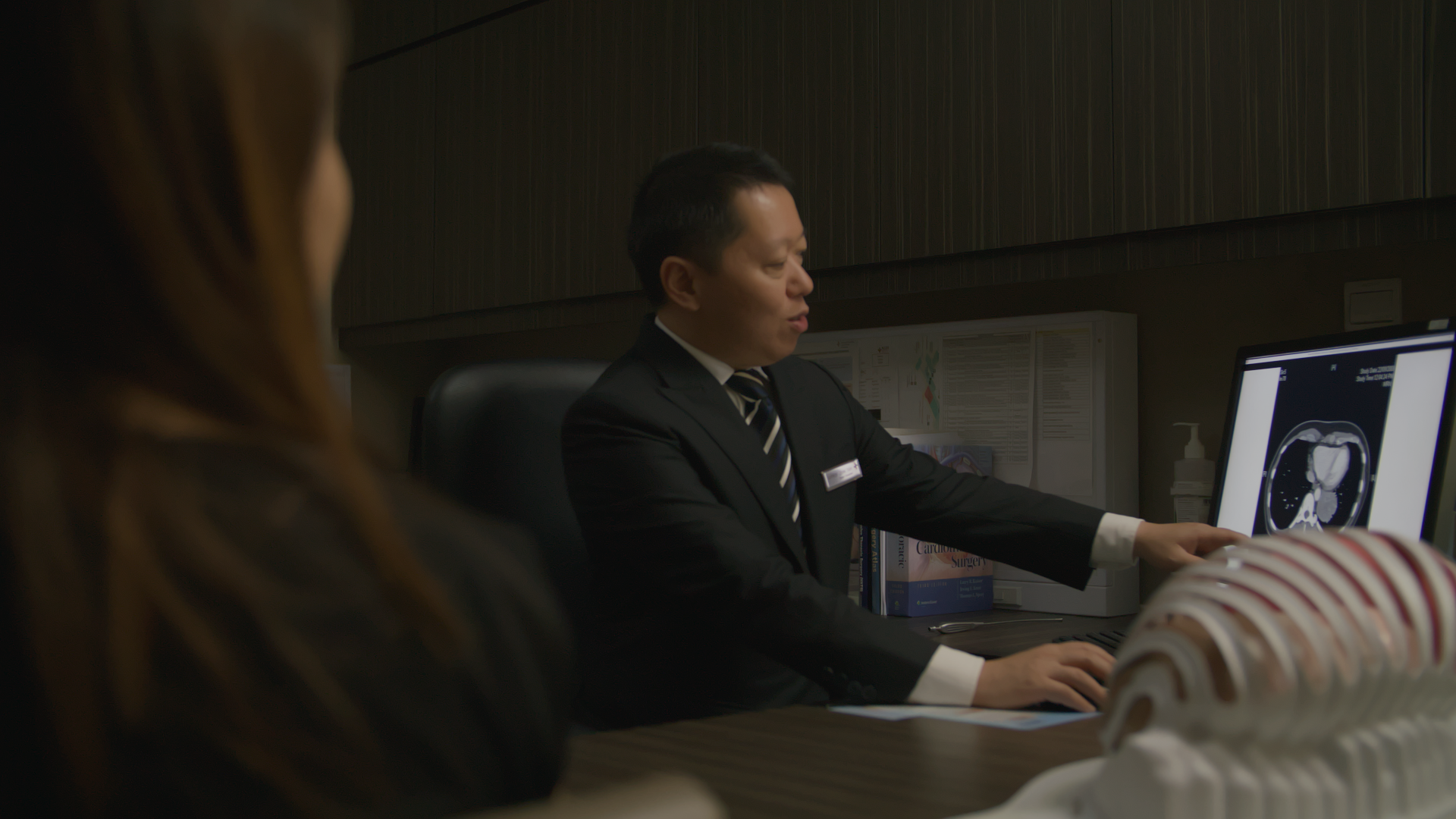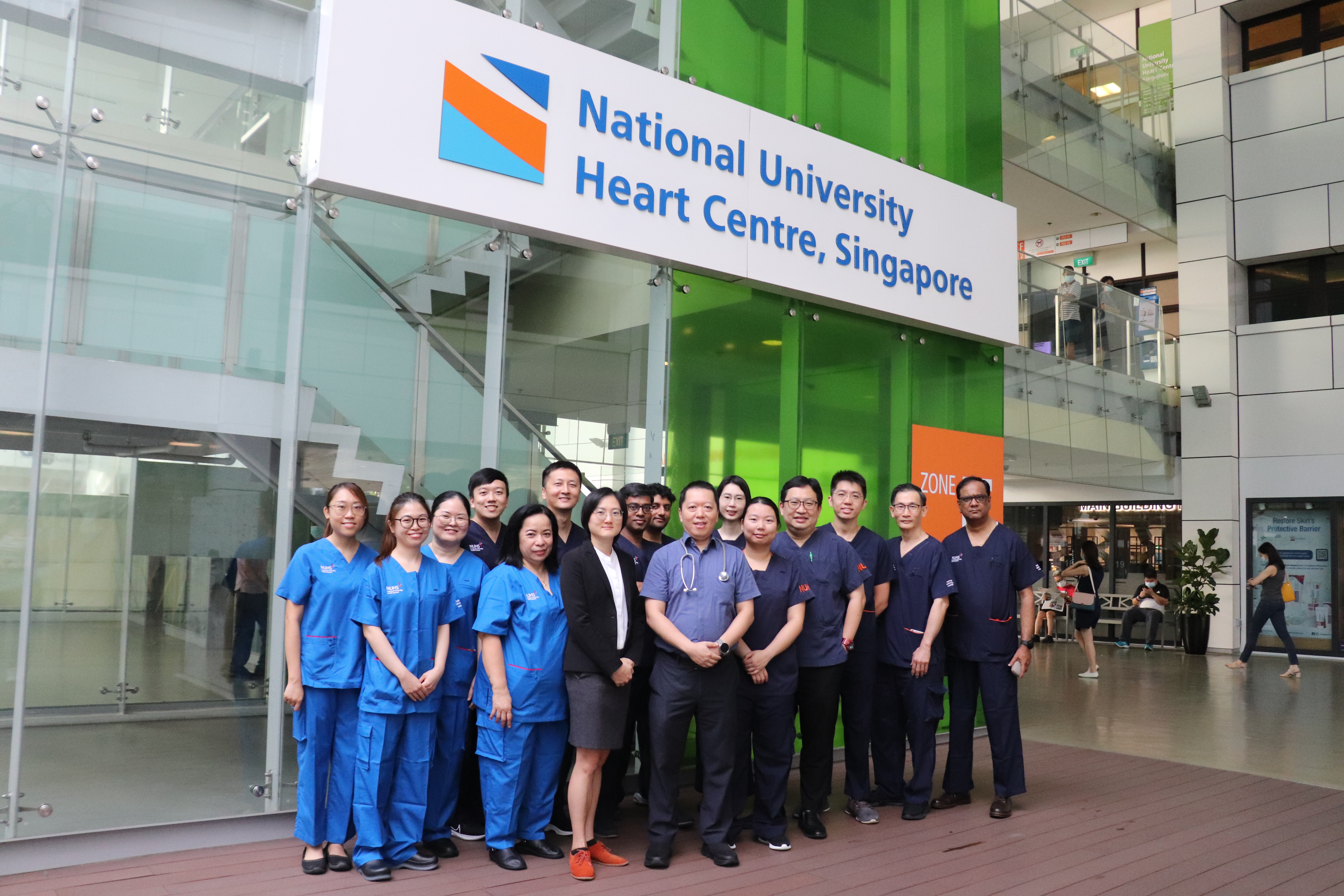Pushing Boundaries In Lung Surgery
All-in-one keyhole
PULSE Issue 41 | July 2023
“What is easy for the surgeon can be hard on
the patients,” said A/Prof John Tam Kit Chung,
Head and Senior Consultant, Division of Thoracic
Surgery, Department of CTVS, NUHCS, as he
looked back on his journey as a thoracic surgeon
for the past 25 years.
Patients at NUHCS with lung conditions are usually in
their 60s, 70s, and even their 80s. This makes open-chest
or multiple-incision surgeries riskier for older patients, as
they not only take a longer time to heal but tend to have
other conditions that may complicate the surgery.
In his pursuit to reduce post-operative pain for lung
surgery patients, A/Prof Tam looked to find a better
technique that would be safe, reduce surgical risks
and have better outcomes for patients.

This led to the
development of a new surgical technique – Uniportal
Video-Assisted Thoracic Surgery (UVATS).
Compared to the conventional multi-portal Video-Assisted Thoracic Surgery (VATS) which uses a few small
incisions on the patient's torso to access the lungs,
UVATS uses only one small cut and is currently the least
invasive technique for lung surgery.
The surgical technique is performed through a single cut
of about 3cm, at the side of the chest. Through this cut,
a small telescope is inserted into the body to magnify
the insides of the thoracic region on a video monitor.
Surgeons then proceed with the operation using specially
made minimally invasive instruments which are small,
thin and chopstick-like, in order to perform the surgery.

In 2009, A/Prof Tam led his team to perform the first UVATS in Singapore. He has since gone on to mentor a generation of thoracic surgeons in this single-incision surgery technique, developing the NUHCS Lung Surgery Centre to its current pinnacle of excellence. Apart from lung surgery, thoracic surgeons also perform surgeries in the chest area involving organs such as the chest wall (ribcage and breast bone), the pericardium (fluid-filled sack that surrounds the heart), the sympathetic chain (structure of nerve fibres spanning from the base of the skull to the base of the spinal column), and the diaphragm. The team is also trained to manage airway emergencies involving the trachea and bronchus (windpipe). Committed to providing the highest standard of care for patients and advancing the field of thoracic surgery, A/Prof Tam and his team continue to pursue innovative solutions through cutting-edge research and education.
CONDITIONS THAT MAY REQUIRE LUNG SURGERY
• Collapsed Lung (Pneumothorax) – When air leaks into the area between the lungs and the ribcage, this leads to the lung collapsing.
Drainage tubes are used to suction the air out and re-expand the
lung while the lung is repaired to prevent it from collapsing again.
• Fluid around the Lungs (Effusion or Empyema) – Fluid may build up
in the chest area around the lung as a result of an infection or illness
such as Pneumonia. Surgery is performed to remove all the fluid and
infected material from the area to help the lungs heal.
• Lung Nodule or Lesion – An abnormal growth that forms in a lung
usually after an infection or inflammation. Most lung nodules are
benign and do not require treatment. However if the growth presses against the airway, it may cause chest pain. Surgery can be performed to remove the nodule.
• Lung Mass – An abnormal growth in the lung area that is more than
3cm in diameter. Lung masses could be benign or malignant and are
determined by surgery to remove a lobe of the lung and the neighbouring lymph nodes for further tests.
DID YOU KNOW? LUNG CANCER IS THE #1 CANCER
KILLER IN MEN AND #2 IN WOMEN
IN SINGAPORE.
Unfortunately, most patients die of lung cancer due to late detection.
If detected and treated early, lung cancer can be treated with more
than 90% survival rate of patients in five years. Aggressive treatment
of early lung cancers has also shown excellent survival outcomes with
minimal long-term side effects.
Studies have shown that UVATS offers faster recovery for patients who
detect lung masses early. With advanced medical technology, later
stages of lung cancers are now amenable to targeted therapy with
good long-term disease control.
For more information, please visit www.nuhcs.com.sg.
NUHCS LUNG SURGERY CENTRE
Established in 2007, NUHCS Lung Surgery Centre today carries out more than 400 lung surgeries each
year. It is the first centre in Singapore to perform
UVATS in 2009 and is the only centre in Singapore
with a full team of experienced UVATS thoracic
surgeons supported by a team of specialty care
nurses and case managers. In addition to the wide
range of lung conditions, the Centre also manages rarer conditions such as Hyperhidrosis (excessive
sweating), Pectus Chests (pigeon or funnel chests),
and Rib Fractures.
